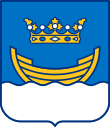
Ruoholahti is a quarter in Helsinki, part of the Länsisatama neighbourhood and Kampinmalmi district. It is located in the southwestern part of the central city area of Helsinki, close to the Lauttasaari island, and it functions as the principal connection between the Helsinki city centre and the city of Espoo to the west. As of 2005 Ruoholahti is inhabited by approx. 3300 people. The Länsisatama port is also situated in Ruoholahti.

Punavuori is a neighbourhood in the center of Helsinki, the capital of Finland. The name Punavuori refers to red cliffs located between Sepänkatu and Punavuorenkatu. They were still visible in the 19th century, nowadays they are covered with buildings and pavement. Punavuori was traditionally a working-class neighbourhood, today it is known as a bohemian district popular among artists, students and hipsters. It is one of the most densely populated areas in Finland.

City-Center is a partly implemented plan to raze and rebuild the block between the central Helsinki streets of Kaivokatu, Keskuskatu and Aleksanterinkatu, creating a unified, modern appearance for the area. The plan was originally drafted between 1958 and 1960 by Viljo Revell; Heikki Castrén continued work on the plan after Revell's death in 1964. The fulfillment of the plan would have required the demolition of several old buildings that are today considered to be a vital part of Helsinki's heritage.
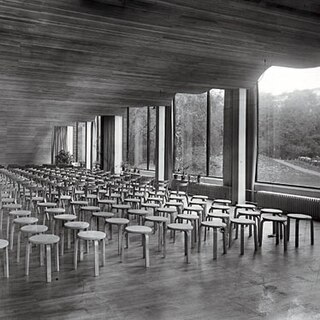
The architecture of Finland has a history spanning over 800 years, and while up until the modern era the architecture was highly influenced by Sweden, there were also influences from Germany and Russia. From the early 19th century onwards influences came directly from further afield: first when itinerant foreign architects took up positions in the country and then when the Finnish architect profession became established.

The Natural History Museum is one of the museums under the directorship of the Finnish Museum of Natural History, part of the University of Helsinki, in Helsinki, Finland.
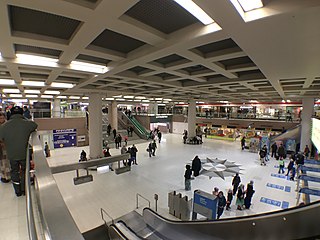
Asematunneli is an underground city and shopping centre connecting the Helsinki Central railway station and City-Center in downtown Helsinki, Finland. The area also has a ticket sales area for the Rautatientori metro station and connections to the nearby Forum shopping centre as well as Stockmann and Sokos department stores. The shops and supermarkets in Asematunneli are licensed to stay open longer than normal as well as during the national holidays, making it an important location for last minute and emergency shopping for the people of the Greater Helsinki area. Kamppi Center and the bottom floor of Sähkötalo across Fredrikinkatu can also be accessed via tunnels by going through the Forum shopping centre first. The interconnecting areas provide for convenient movement across a wide area of central Helsinki, and allow pedestrians to escape the rain, snow, and cold weather that dominate much of the Finnish calendar.

Fredrikinkatu is a street in Helsinki, Finland that starts from Viiskulma in the district of Punavuori and continues north by the western side of Kamppi Center until it reaches Lutherinkatu and the Temppeliaukio Church in Etu-Töölö.
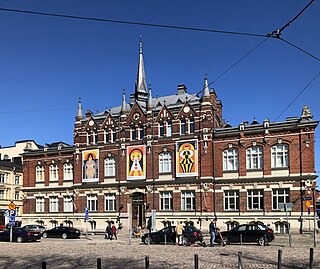
Design Museum is a museum in Helsinki devoted to the exhibition of both Finnish and foreign design, including industrial design, fashion, and graphic design. The building is situated in Kaartinkaupunki, on Korkeavuorenkatu Street, and is owned by the Republic of Finland through Senate Properties. The building was completed in 1895 and originally built as a school building for the Swedish school Läroverket för gossar och flickor.
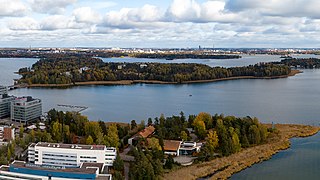
Lehtisaari is an island and part of Munkkiniemi, a neighborhood in western Helsinki, Finland.

Bulevardi is a boulevard in Helsinki, Finland. It starts at Erottaja and ends at Hietalahdentori. The majority of the boulevard is located in the western part of the Kamppi neighborhood and a small part of Punavuori. Restaurants, cafes, and art galleries line the street. The Alexander Theatre and Sinebrychoff Museum of Art are located on Bulevardi.

Zachris Usko Nyström, known as Usko Nyström, was a Finnish architect and one of the most influential professors of architecture at Helsinki University of Technology; among his students were later notable architects Eliel Saarinen and Alvar Aalto. One of the pioneering architects of the early Art Nouveau or Jugendstil style in Finland at the end of the 19th and beginning of the 20th century, he continued to influence generations of students by introducing them to the style. Many of his key architectural works were made while he was in the architectural partnership Usko Nyström─Petrelius─Penttilä which operated from 1895 to 1908. His most famous work is the Grand Hôtel Cascade (1903) in Imatra.
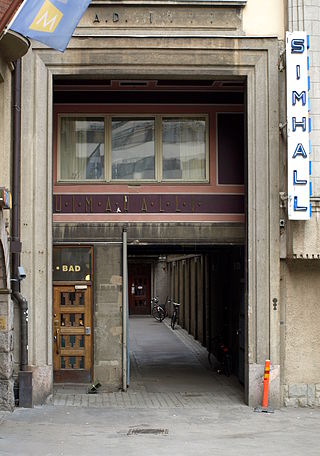
The Yrjönkatu Swimming Hall is the first and oldest public indoor swimming hall in Finland. It was inaugurated on 4 June 1928, and it took a long time until a second indoor pool was opened in Finland. The pool is located in the Kamppi area of Helsinki at Yrjönkatu 21b, and is owned by the city of Helsinki.

Digelius Music was a record shop and internet retailer located in Viiskulma, Helsinki, Finland. It had been functioning in more or less the same place from 1971 to 2023. Officially its business was "retail of music and video recordings." There are several record shops in the same or neighbouring blocks. As of 2024 Digelius functions as an internet retailer whose orders can be picked at Eurantie, Helsinki.

Fabianinkatu 17 is a national romantic-Art Nouveau building in central Helsinki. Built in 1900–1901 to a design by the architectural firm of Gesellius, Lindgren and Saarinen, it was originally a block of flats, but became increasingly used for offices and was for many years known as the Doctors' House. In 1953 Agronomiliitto, the Finnish Association of Agronomists, bought it, and it is now called Agronomitalo.

The Pohjola Insurance building is the former headquarters of the Pohjola Insurance Company at Aleksanterinkatu 44 and Mikonkatu 3 in central Helsinki. Primarily designed by Gesellius, Lindgren & Saarinen and constructed in 1899–1901, it is a prominent example of Finnish national romantic architecture. It was acquired in 1972 by Kansallis-Osake-Pankki, now succeeded by Nordea.

The Polytechnic Students' Union or Sampo Building is a National Romantic building at Lönnrotinkatu 29 in central Helsinki, designed in 1903 by Karl Lindahl and Walter Thomé. It has since become a hotel and is often called the Vanha Poli.

Hotel Marski is a hotel opened 1962 on Mannerheimintie 10 in Helsinki, Finland.

Domus Litonii is a three-story Empire style residential, commercial and office building with a lower bazaar wing located at Aleksanterinkatu 50 in central Helsinki, Finland.

IsoKarhu is a shopping center owned by Citycon, which was opened in 1991. It is located in the city center of Pori, Finland, along the Yrjönkatu pedestrian street between Karhunpää, Linna and Itätulli districts.

Autotalo is a business building in Kamppi, Helsinki, Finland, built in 1958. It is located near the Kamppi metro station in a lot bordered by the streets of Salomonkatu to the south, Fredrikinkatu to the east and Runeberginkatu to the west. The address of the building is Salomonkatu 17. The Autotalo building consists of two 12-floor towers, and it comprises the southern half of its city block. The name "Autotalo" is sometimes used to refer to the entire block, also consisting of the two separate high-rise buildings at the northern edge of the block, built at the same time as the Autotalo building.






















